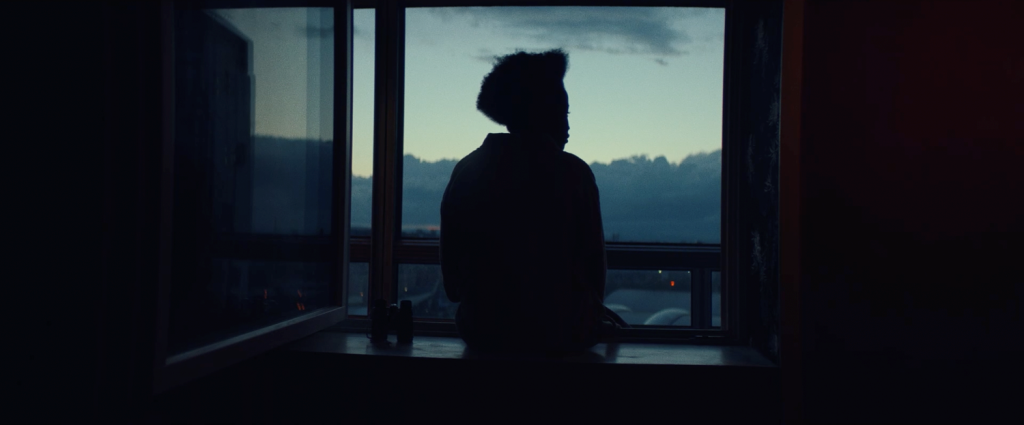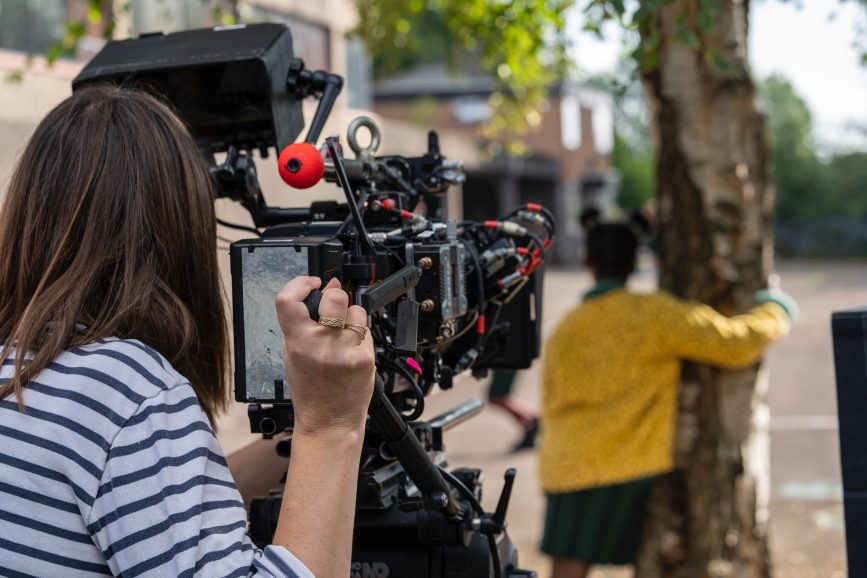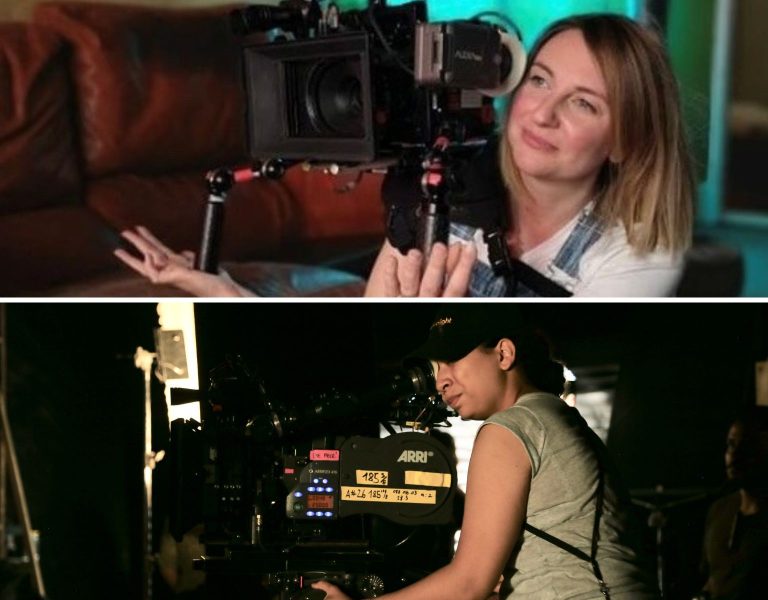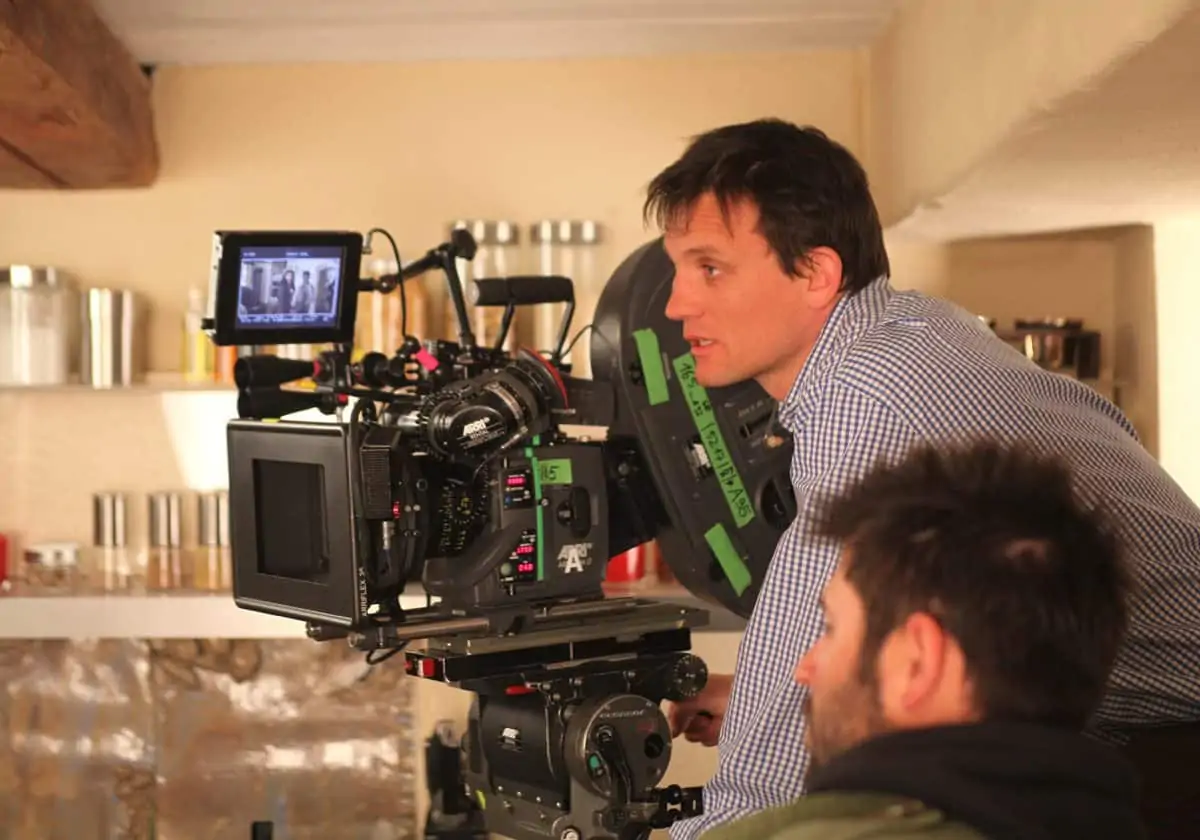Female gaze
Adura Onashile’s personal portrayal of a fraying maternal bond in Girl gave cinematographer Tasha Back plenty of opportunity to paint with light and colour in Glasgow’s concrete jungle.
When Ama hits puberty, her impending womanhood proves an unwanted reminder of a past that her mother, Grace, is trying to escape. Partly inspired by her relationship with her own mother, Adura Onashile’s directorial debut seeks to explore “that beautiful intimacy that is possible from a deep connection between a mother and her daughter. That intimacy that flourishes in spite of trauma and fear and doubt.”
Tasha Back, for whom Girl marks her first feature as cinematographer, was intrigued by the film’s premise. “The script was very visually descriptive, so I knew Adura would be interested in telling the story with a strong aesthetic, and in a way that I was interested in,” she remarks.

In their early discussions around the film’s look, Onashile and Back explored the work of Bradford Young ASC, as well as Chayse Irvin ASC CSC’s collaborations with Khalil Joseph. “[Bradford and Chayse] light faces beautifully and their grades have a bold use of colour, as does their lighting,” says Back, highlighting Young’s endeavours on Andrew Dosunmu’s Mother of George and Irvin’s work on Sampha’s Process.
To help develop a distinct look for Girl, Back brought award-winning colourist Simone Grattarola of Time Based Arts on board from prep. Grattarola and Back created an initial LUT which they and DIT James Hogarth then refined so it would mirror the film’s final look as much as possible. “James would grab stills from each day’s rushes, then Simone would do an initial look on them,” says the cinematographer on their workflow. “It meant that we had this body of stills that had already been worked on, so we could use these as a reference as to where we thought the grade was going to go.”
This method proved fortuitous; in the end, Back wasn’t available for a lot of the grade due to scheduling conflicts, so honing the look with Grattarola throughout the production process was invaluable. “Simone is a collaborative artist within this film, the grade was a key part of the look we wanted to create,” she adds.

Another talking point between Onashile and Back in prep was lenses. Back sought lenses that would lend a “cocooned” feeling to Girl’s visuals, to reflect how Grace felt confined in her home while Ama’s own world is growing. First, she tested Lomo anamorphics at Glasgow rental house No Drama and while she liked their characteristic bokeh, Onashile wanted something more subtle. Also, due to the amount of night-time shoots, the DP needed a set of reliable glass where she wouldn’t need to worry about variable stops.
Cooke anamorphics, paired with the ARRI Alexa Mini, hit the sweet spot of good looks and consistency. Back explains: “I shot them wide open for scenes where I really wanted to lean into that distortion at the edges. We were creating this world where the mother is trapped in the flat and scared of the outside world, so I liked the effect of the distortion and fall off at the edges that the anamorphics gave. We leant into that even more with dioptre shots of details, like extreme close-ups of Ama’s face.”
When it came to camera movement, they used a solid camera in the apartment and handheld to evoke the freedom of the outside world, particularly in the scenes with Ama and her new young friend. There were just three days of Steadicam across the 34-day shoot (extended from the original 24-day schedule due to COVID complications). Back spotlights the work of her first AC, Chris Maxwell Assoc. ACO GBCT: “The film wouldn’t have been achievable without him. We were shooting anamorphic, handheld, wide open – and Adura loved the longer lenses with dioptres… We couldn’t have thrown more at the guy, but he delivered.”

Girl heralded Back’s return to Glasgow for the first time since working on World War Z (2013) as a second AC. “I love Glasgow and I’d happily shoot a number of films there because visually, it’s a really interesting city,” she enthuses. “It has lots of amazing graffiti and murals, and the architecture is really diverse and striking.”
Grace and Ama’s apartment was a set build, constructed at Govan Shed (formerly used as a props store for the recently wrapped fifth Indiana Jones outing). For exteriors and balcony shots, the ideal location was found in the city’s notorious Gorbals estate.
Back loved working closely with production designer Soraya Gilanni Viljoen to bring colour and texture to Grace and Ama’s world. She appreciated Viljoen’s use of texture: “For example, she had a mixture of gloss paint, textured wallpaper, and smoother, distressed surfaces that were less reflective,” she recalls. “All of those things affect the way that light falls on them, and that builds the frame. We had collaborative discussions regarding window dressings and practicals because these affect lighting so much. What’s more, Soraya very much thinks about how things are going to look on camera.”

Another key collaborator was gaffer Paul Joy. He and Back worked with the art department regarding practicals and light sources built into the set build, while Gilanni included cupboards and glass bricks in her design for Joy to hide LEDs in. Then Back chose tungsten sources to light through the windows, with ambience coming from an LED soft box rigged above the set.
For location lighting, when shooting pivotal night-time scenes from the family’s balcony overlooking the Gorbals estate, the crew were shooting between multiple tower blocks so communication and co-ordination was key. “We didn’t want a flat source just lighting everything up, we wanted pools of light – especially as we were shooting from above looking down onto the estate,” Back remembers. “We hid SkyPanels, Astera Tubes and a few tungsten sources around the area. We set all the colours for the LED sources remotely, with Paul controlling everything from his iPad next to camera and we had sparks in each of the flats in the opposite block to set the heads. Co-ordinating that was tricky because we were all spread out [around the estate].”
A key part of the success of Girl, the DP believes, is the strength of its interdepartmental collaboration. “I’m proud of the collaboration between all these visual artists – Soraya, Simone, costume designer Kirsty Halliday, and make-up designer Kat Morgan. It’s fortuitous because you never know how people are going to mesh together, but Adura picked artists who had a similar visual style and it worked.”
Girl will be released on 24 November through Studio Soho Distribution. Watch the trailer here:


















